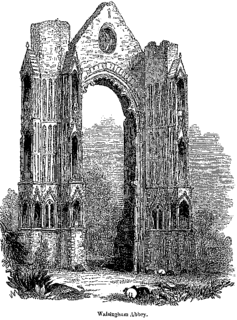

Shortly after my arrival here, my uncle and aunt took me on a trip to see the canals and canal boats at the Pontcysyllte aqueduct, and Llangollen, a gorgeous little village in Wales. (Neither of those names are pronounced the way you think. It's Welsh, so don't even try. The fact that Uncle Mike can do it proves its not a genetic Welsh thing, but it takes a lot of practice.) The aqueduct brings the Llangollen Canal over an enormous gorge,

at the bottom of which you can see some of the most charming and lovely Welsh rural scenery anywhere (as long as you're not afraid of heights.)
I'm terribly impressed with grand engineering projects, particularly those completed before the steam age. The canals in England were largely dug by hand by Irish labourers, and formed one of the most important technological breakthroughs of the early industrial revolution. They've been replaced of course, first by rail and now by roads, but consider that before they were built, the only way to ship goods around the country was by horse cart over almost completely unpaved roads. Roads, moreover, that by our standards, were little more than muddy farm tracks.

Thomas Telford is a hero of the industrial age (something as we know, I'm rather ambivalent about) and no matter what we think of the long-term results of the entire movement, there is no doubt that the creation of these canals, canal bridges and aqueducts, was a work of engineering genius unequaled in his time.
The boats are not barges, as is commonly thought. I saw a real barge a few weeks ago and it is enormous. They are too big to get through most of the locks and certainly can't get over most of the bridges. They only take barges on the bigger canals.
These are the more common kind and are called narrow boats, and are now used exclusively as pleasure craft. There is a whole little narrow boat subculture in Britain where people, mostly retired, tool about the countryside from Liverpool to London and as far as Norfolk on the other side.
My uncle has a particular thing about them. Doesn't talk about it much, but misses his boat very much.


Lots of ducks. Canals are really great places to watch waterfowl.

Here reason for the name "narrow" boat becomes clear.


The locks are fascinating. Most of the locks in use today are the same that were built at the time the canals were constructed. As you can see here, they are operated by a hand windlass that all the boaters keep on board.
It can be quite a lot of work to get through a long system of locks.

The lower half of the lock filling.

Just above this spot, there is a very long string of sixteen locks. After you've worked your way down this, which on a busy day can take all day while you wait your turn, you moor the boat next to the pub and have something to eat and a pint before tackling the next set of locks.

This is the Shroppie Fly, a kind of Narrow Boat enthusiasts' hangout.
You use the windlass (which looks like a bent crowbar) to raise and lower road bridges too. When we came to this one, the boaters (probably on a hireboat) had left the bridge up and a car was left sitting there until the next boat came along to take care of it.

Stay tuned for Llangollen.



No comments:
Post a Comment